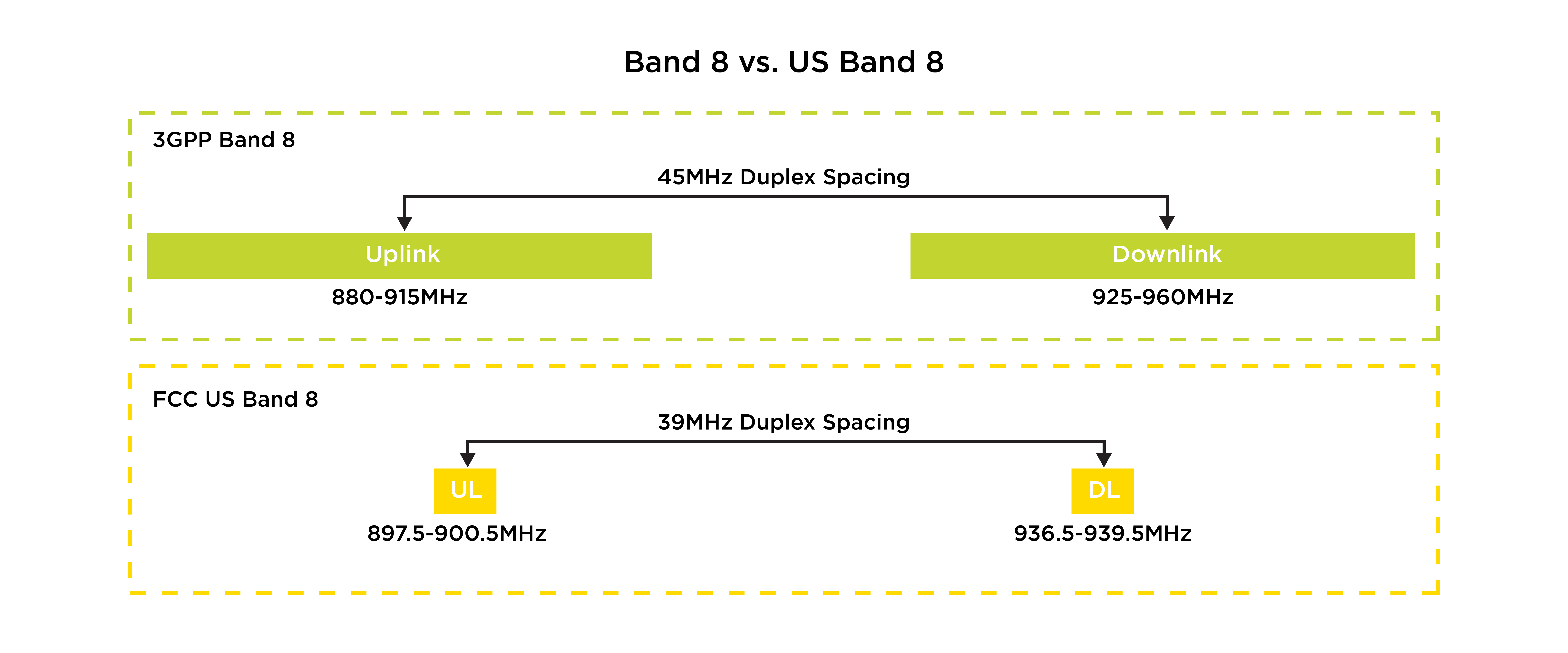Utilities must perform due diligence when evaluating long-term evolution (LTE) devices to work on a Band 8 LTE network. Education around the differences between 3rd Generation Partnership Project (3GPP) Band 8 LTE and Federal Communications Commission (FCC) Band 8 is essential.
The 3GPP LTE spectrum is partitioned into segments called bands. Each band has an allotment of frequencies designated for use. In addition to frequency specification, some bands are designated for time division duplexing (TDD) operation while others are allocated for frequency division duplexing (FDD) operation. Additionally, some bands are region-specific while others are global.
In the U.S., there has been some confusion with Band 8 spectrum because of the two different specifications. The 3GPP specifies that Band 8 is in the 900 MHz range and employs 45 MHz duplex spacing. Duplex spacing is the gap between the uplink (UL) center frequency and the downlink (DL) center frequency channels. When the UL and DL channels utilize different frequencies, it is referred to as FDD — unlike TDD, where the UL and DL channels share the same frequency, and usage is divided based on timing. The 3GPP also specifies the UL and DL channel bandwidth as 35 MHz.
The confusion mostly relates to how the FCC has designated Band 8 utilization. The FCC has specified Band 8 to also be in the 900 MHz range; however, it must utilize 39 MHz duplex spacing between the center frequencies of the UL and DL channels. The UL and DL channel size is also much smaller, at only 3 MHz wide. To differentiate between 3GPP Band 8 and FCC Band 8, the 3GPP version is referred to as “Band 8” while the FCC version is referred to as “U.S. Band 8.”
 One important question to consider is: Can a cellular chipset support both specifications of Band 8? Yes, it can. However, this depends on whether the manufacturer wants to support U.S. Band 8 parameters. A manufacturer can support both specifications by implementing network assigned duplexing (NAD) in its chipset. NAD is an optional specification defined by the 3GPP and initially released in the LTE Release 8 specification. NAD enables the chipset to recognize the duplex spacing of the network it has attached to and adjust the user equipment (UE) to function properly.
One important question to consider is: Can a cellular chipset support both specifications of Band 8? Yes, it can. However, this depends on whether the manufacturer wants to support U.S. Band 8 parameters. A manufacturer can support both specifications by implementing network assigned duplexing (NAD) in its chipset. NAD is an optional specification defined by the 3GPP and initially released in the LTE Release 8 specification. NAD enables the chipset to recognize the duplex spacing of the network it has attached to and adjust the user equipment (UE) to function properly.
Despite the 3GPP defining specifications for the world, and the FCC defining spectrum standards for only the U.S., engineering and manufacturing of cellular chipsets happen globally, which sometimes leads to regulation and compatibility confusion. For example, despite many UE vendors listing their products as supporting Band 8, some unfortunately do not understand the distinction between Band 8 and U.S. Band 8. If U.S. Band 8 is part of an enterprise’s private LTE strategy, it is crucial to thoroughly research and confirm that the chosen UE product supports U.S. Band 8 duplex spacing.
This assurance can be gained by checking the FCC certification status of the UE. If the UE in question has received the mandatory FCC approval to be used in the U.S., the approval will include an FCC ID. This FCC ID can be used to view a collection of testing artifacts confirming the approval on the FCC website. If a UE were to undergo FCC certification testing and did not support the proper U.S. Band 8 duplex spacing, the testing would fail, and no FCC certification ID would be granted. Without verifying the FCC certification status of U.S. Band 8 UEs under consideration, a private LTE customer risks discovering that a UE vendor is in violation of the law and any effort spent in procurement of these UEs would need to be repeated.
Navigating today’s technology standards and spectrum options requires asking the right questions and identifying the optimal design solution to fit your utility’s requirements. Given some of the confusion in the marketplace, it’s important to focus on the facts and the specifications that matter most.
Advanced technologies are only as strong as the communications infrastructure supporting them, and a trusted partner can help design a resilient system that meets unique needs.

